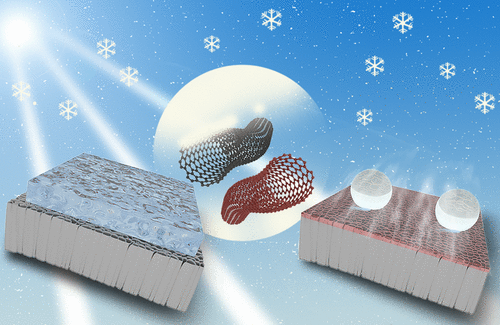Abstract
The accumulation of ice in winter has brought many problems in industrial production and everyday life, and how to prevent icing or remove ice rapidly has aroused great attention from researchers in recent years. In this work, we demonstrated a strategy of using a superhydrophobic photothermal and thermal isolation macroporous xerogel (PMX) to delay icing and remove ice efficiently under faint sunlight irradiation. An oriented macroporous xerogel was prepared by an ice templating method, and multi-walled carbon nanotubes acting as the photothermal genesis component under sunlight irradiation were introduced into the xerogel. After fluorination, the PMX presented a robust water repellency and delayed icing. More importantly, numerous macropores in the PMX matrix acted as the thermal barrier that can restrict heat transmission to surroundings at maximum, which guarantees efficient anti-icing and de-icing in low temperature. Water on the PMX surface can never freeze at -30 degrees C under 0.25 kW/m(2) ("0.25 sun") sunlight irradiation. The outdoor experiment also has confirmed the availability of PMX in a natural winter environment. The PMX integrated with thermogenesis and thermo-isolation functions provides a new route for highly efficient anti-icing and de-icing.

Keywords Plus:SURFACESICENANOCOMPOSITEWETTABILITY
Published in ACS APPLIED MATERIALS & INTERFACES,Volume 13;10.1021/acsami.1c08770,AUG 11 2021


